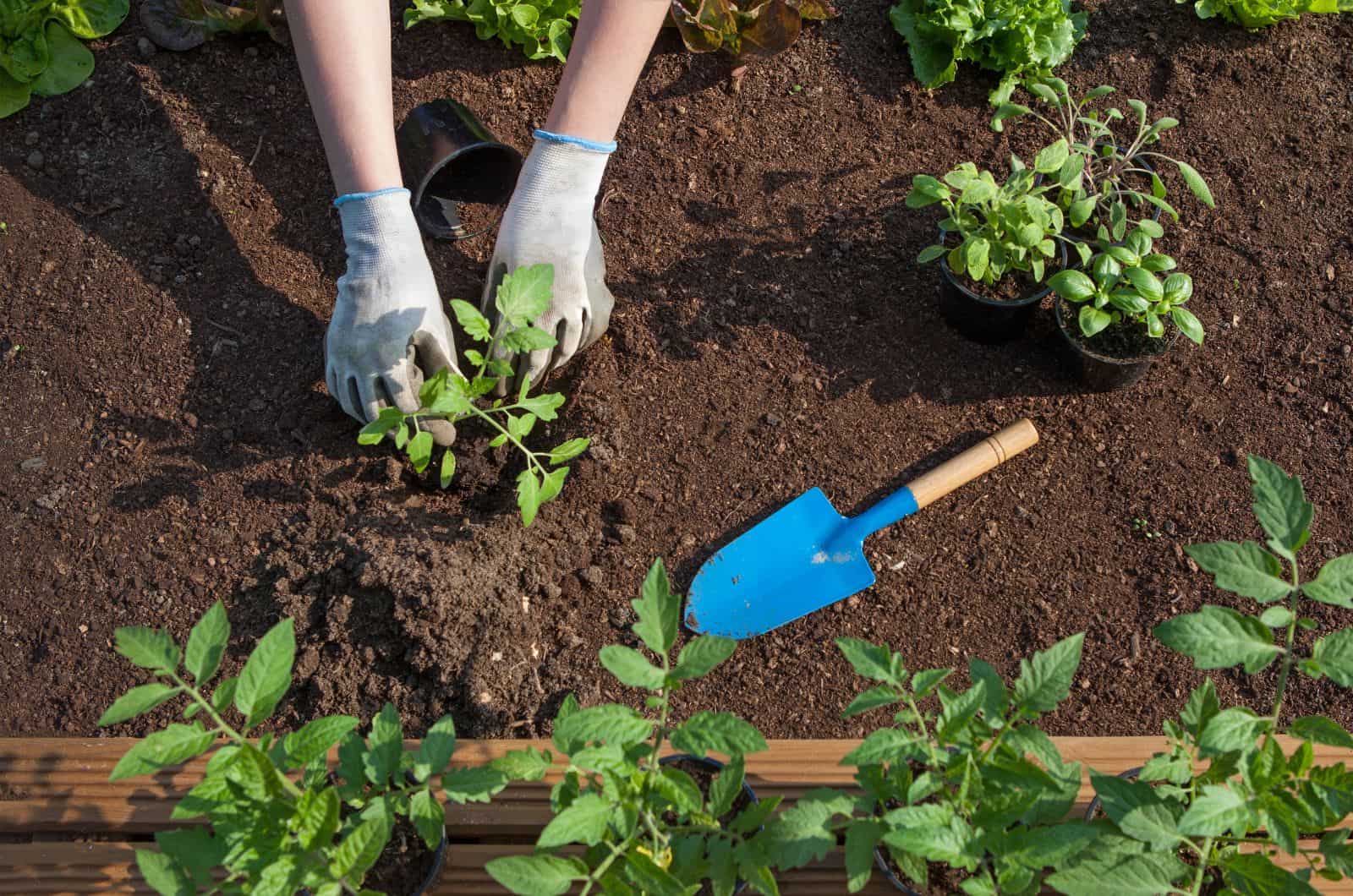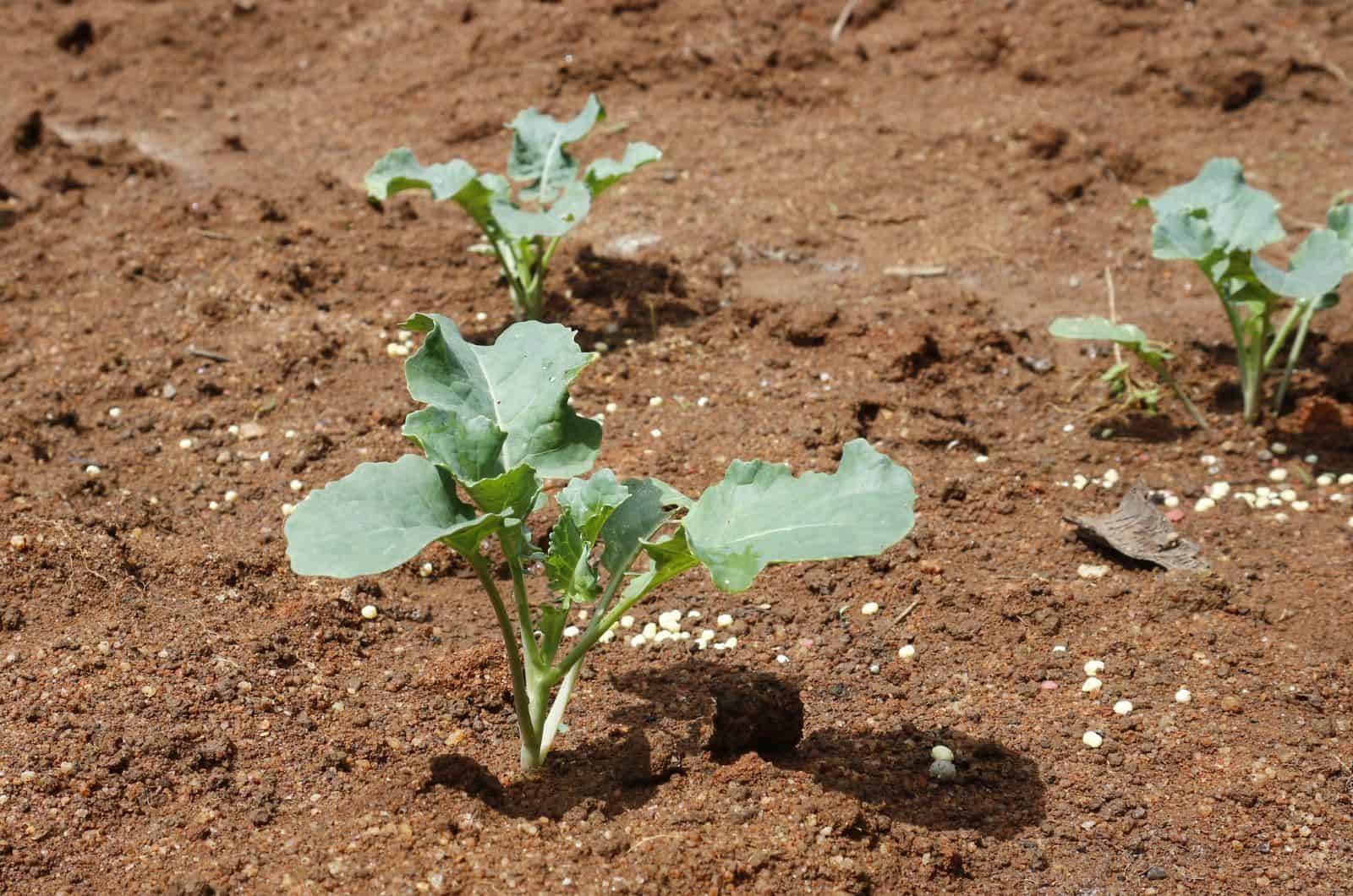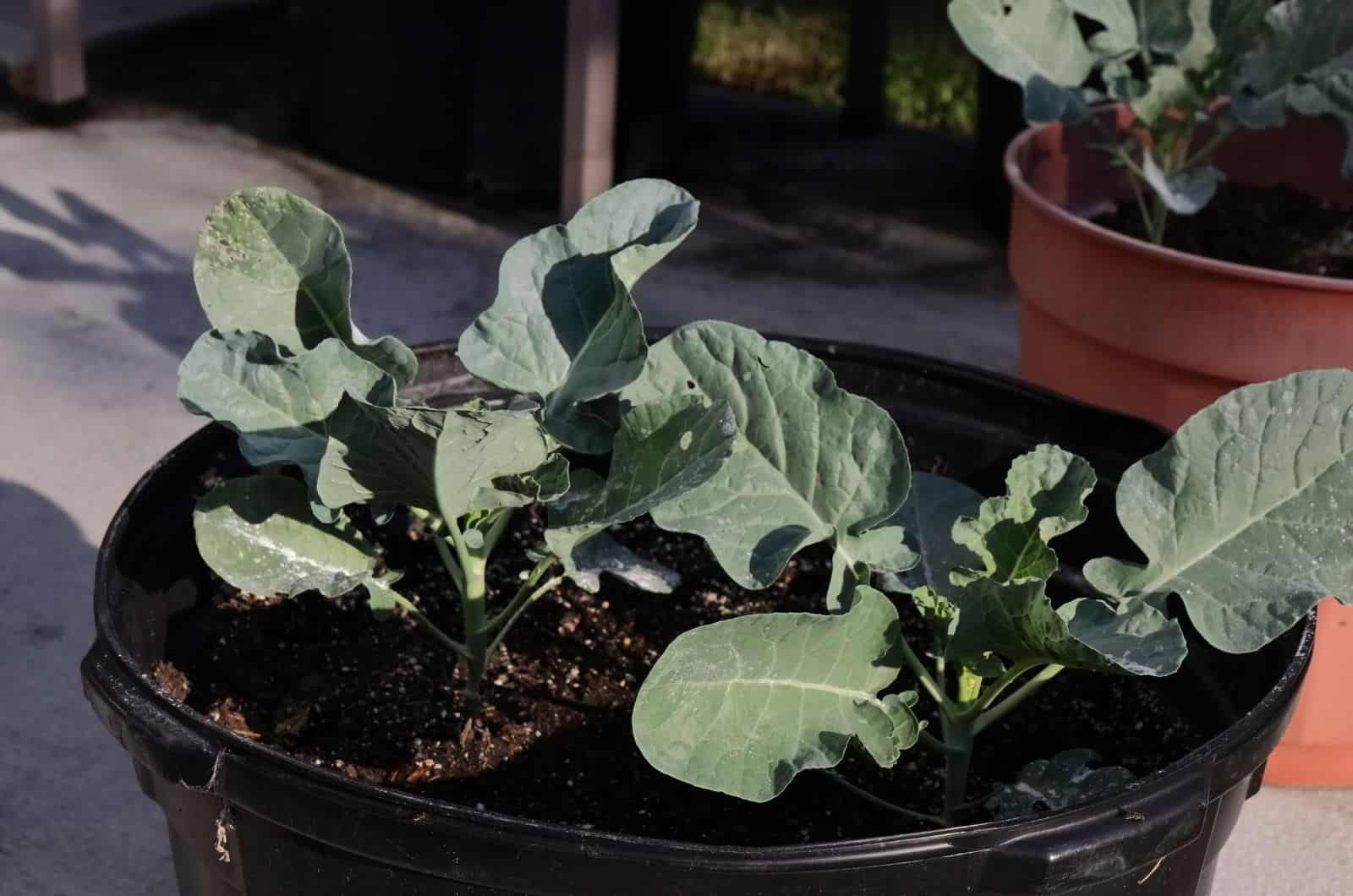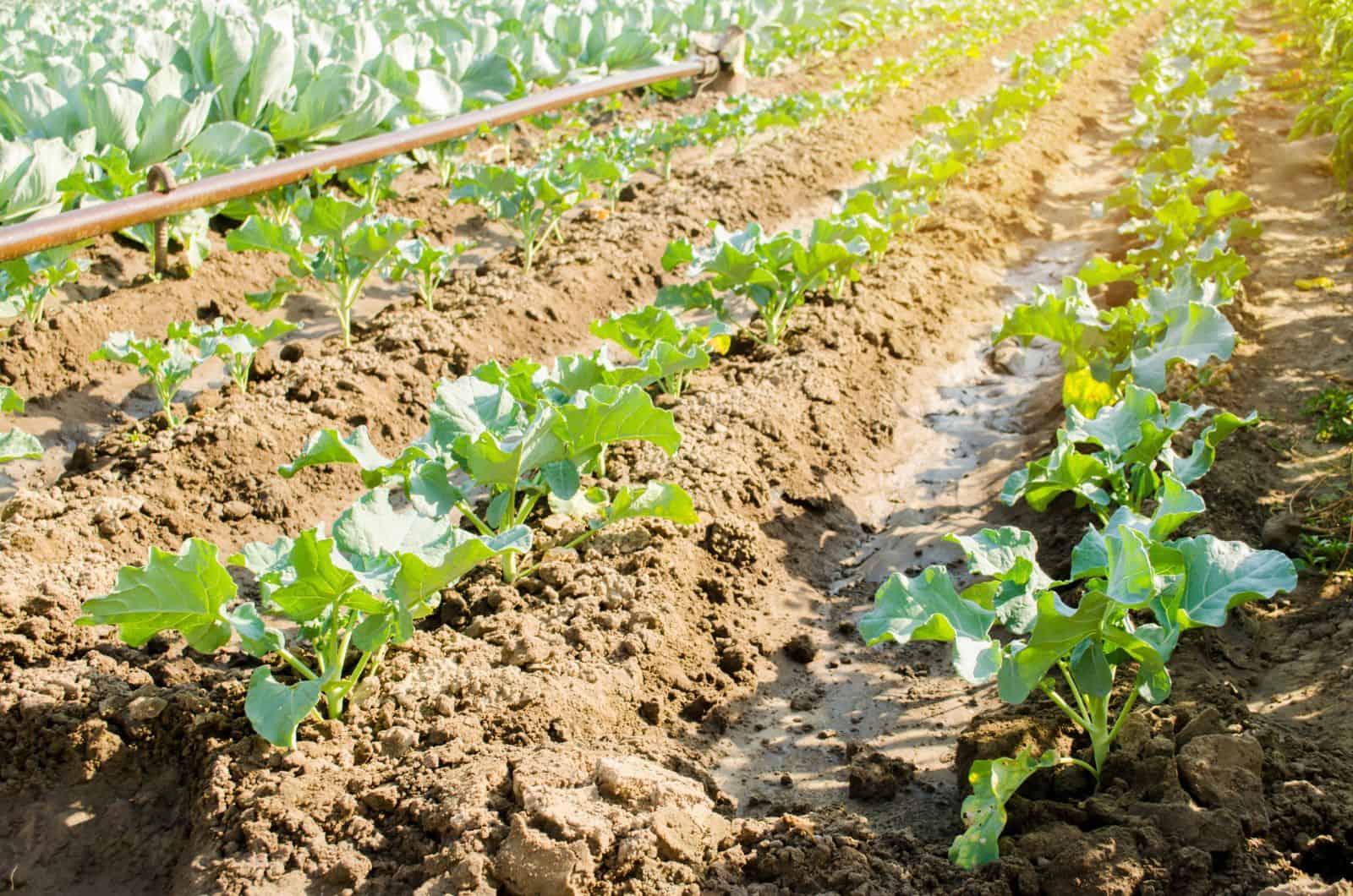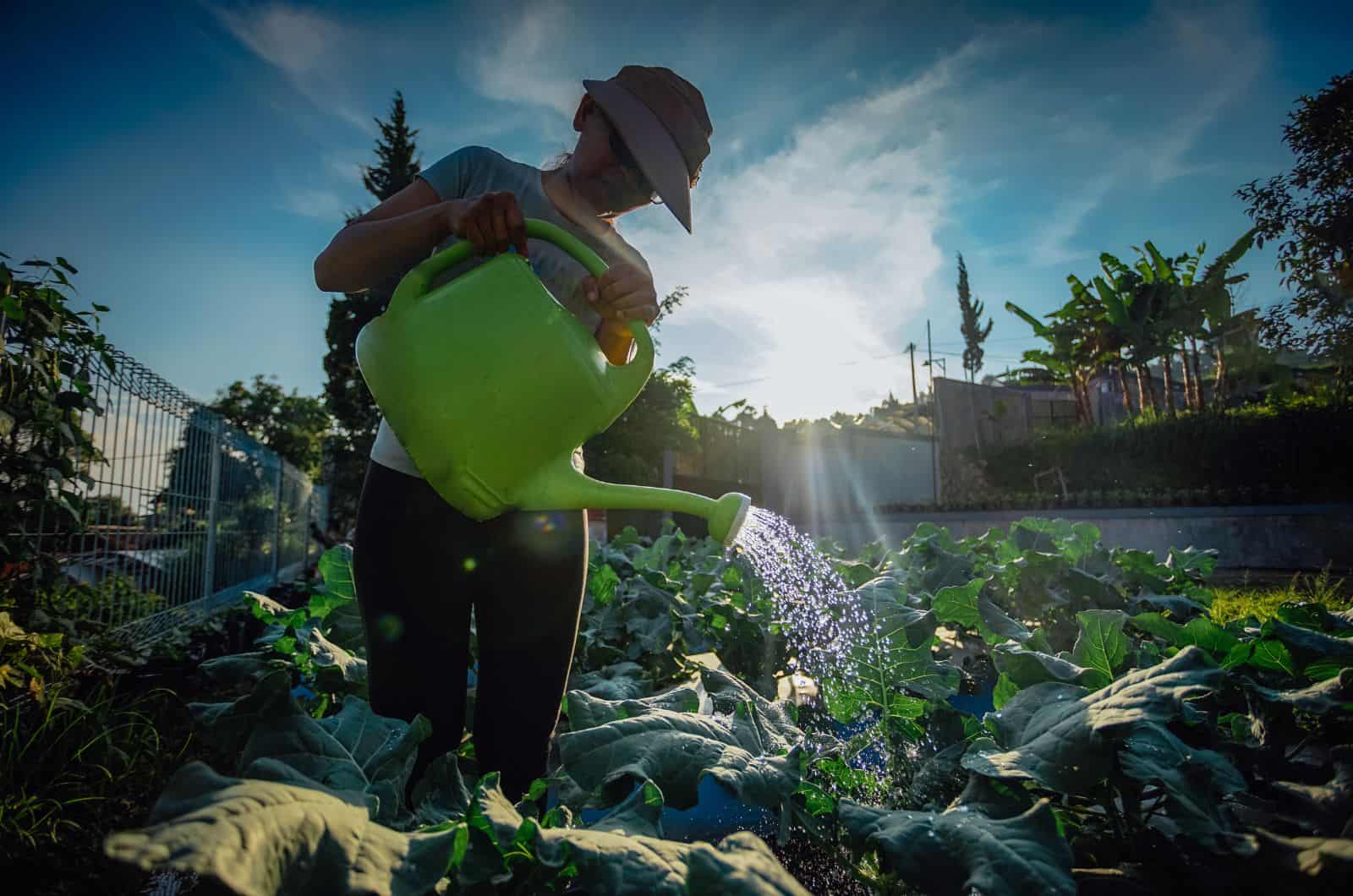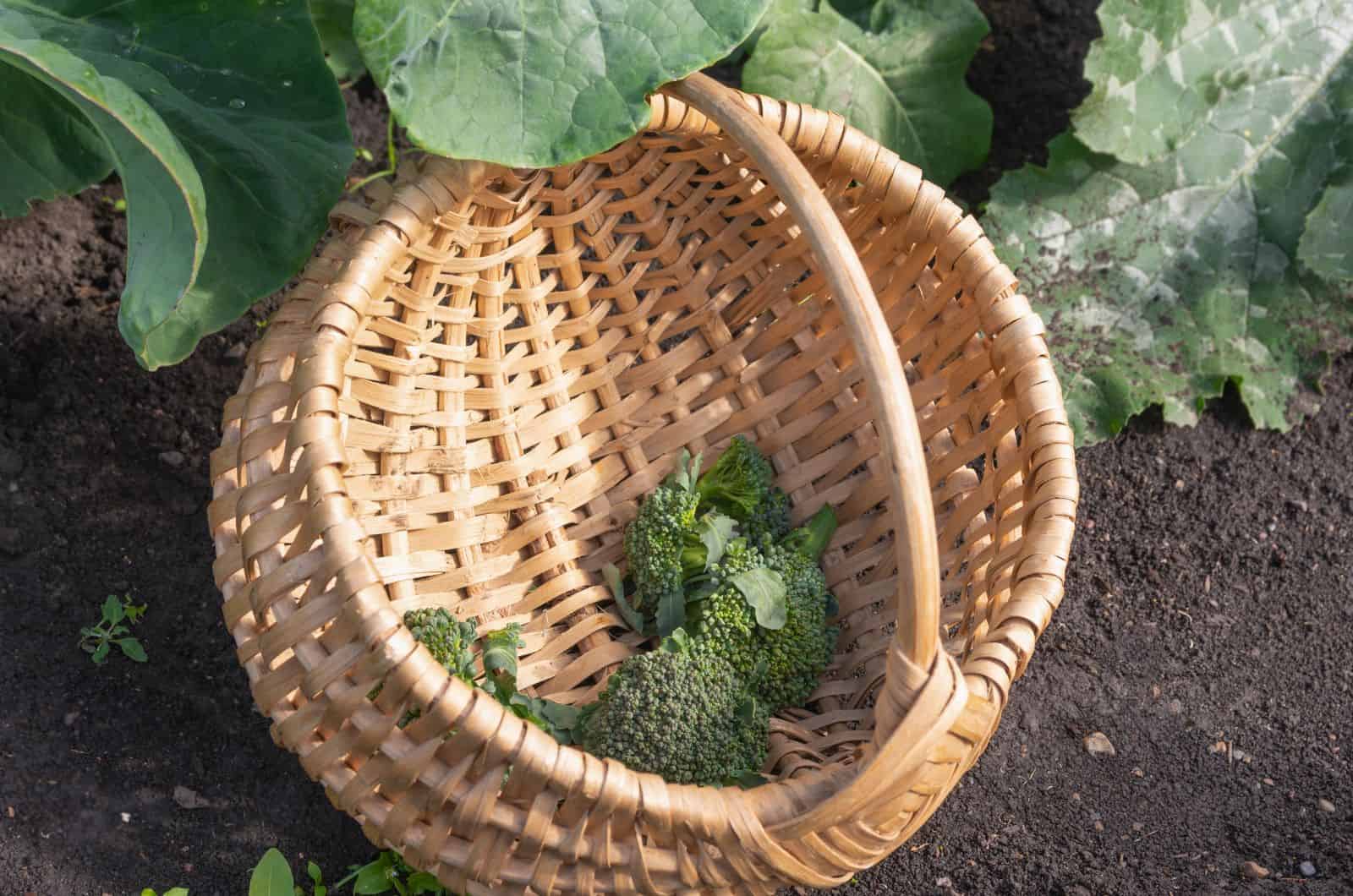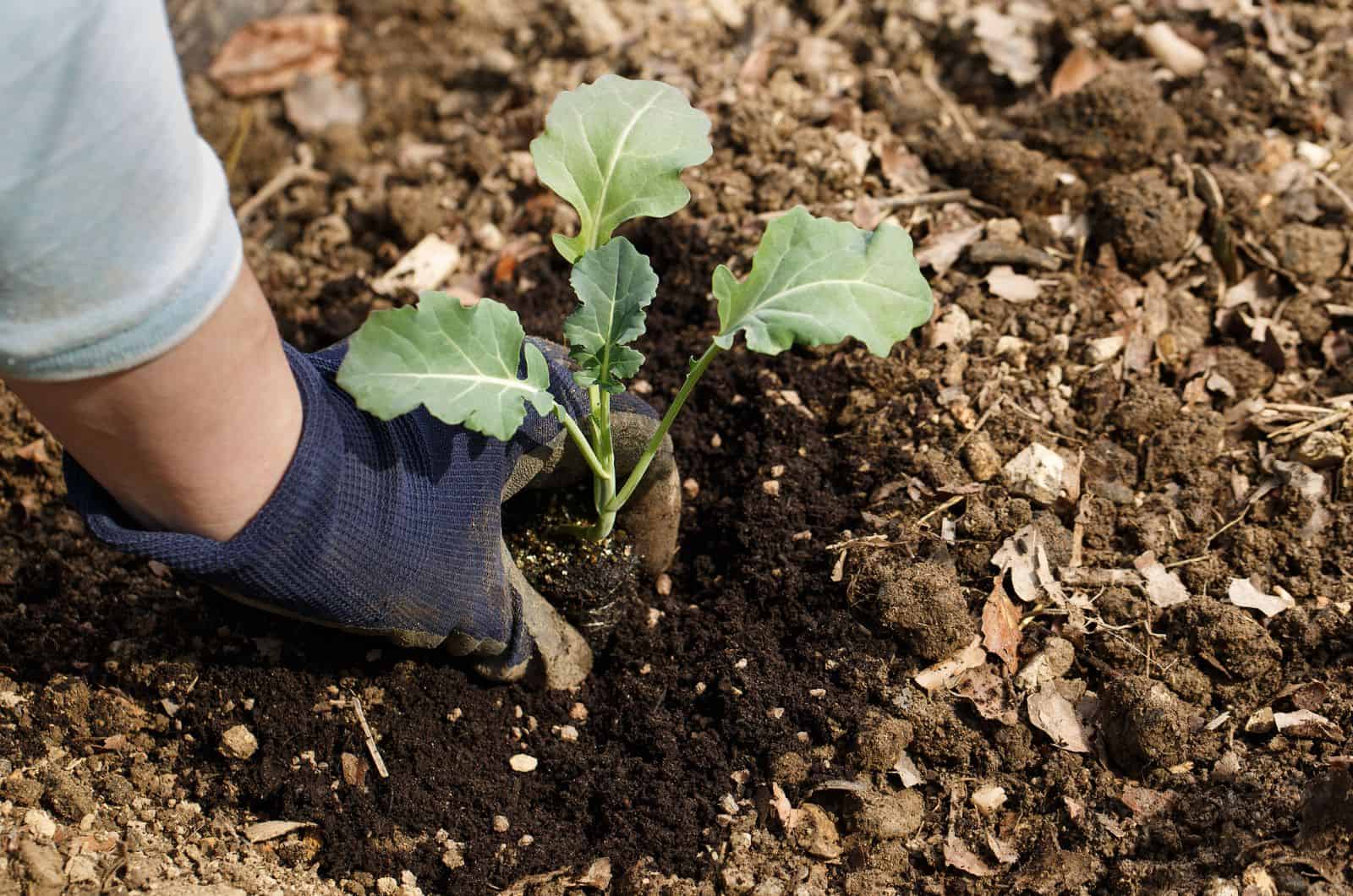Broccoli is one of the tastiest veggies ever – unless you ask kids! Gardeners love these plants as they are so easy to maintain.
You don’t need to put in too much effort, and you’ll still have enough broccoli to feed the whole neighborhood!
The crucial factor of proper planting is knowing the perfect broccoli plant spacing. It’s essential if you want healthy and tasty crops!
I will also tell you more about maintaining and harvesting these tasty cool-season crops.
Let’s learn more!
Broccoli Plant Spacing: Garden
Many growers start broccoli seeds directly in garden soil.
The perfect spacing between each broccoli seed is 3 inches. When the seedlings grow 2-3 inches tall, you’ll need to thin them so that the spacing between each broccoli seedling is 12 to 20 inches.
Let’s look into it in more detail!
Planting Broccoli Seeds Outdoors
Here are the steps for planting broccoli seeds directly in the soil:
1. Choose the variety: You’ll need to choose the broccoli variety based on climate. Each variety responds to low and high temperatures differently. Some broccoli varieties, such as Di Cicco (heirloom cultivar), favor moderate temperatures (65 degrees Fahrenheit).
If you decide to grow this variety, plant it from March to June. Other varieties, such as Destiny, are heat-tolerant, so you won’t need to worry about seed sprouting.
2. Choose the right time: The temperatures in Florida can reach 90°F, which frequently causes bolting, so we typically plant the seeds in the fall.
3. Find an ideal spot: Broccoli enjoys direct sunlight in the morning, but won’t thrive in the sweltering afternoon sun. Make sure you choose a spot where your broccoli will be protected from intense sun rays.
4. Prepare the soil: These veggies prefer fertile soil. If your soil lacks minerals, I recommend adding organic matter. Another great method for getting rich soil is adding a layer of mulch, and this will also aid in water retention and keep the soil cool so your broccoli can thrive.
5. Plant the seeds: Now it’s time to plant the seeds. The depth and spacing between the holes are significant if you want to provide your broccoli with the optimal growing environment.
Make half inch deep holes and ensure the spacing between each hole is 2-3 inches.
Thinning Your Broccoli
The ideal spacing between each broccoli is 12 to 20 inches.
If you are planting broccoli in multiple rows, make sure each row is 3 feet apart.
When the young plants reach 2-3 inches, you’ll need to thin them. Select the strongest seedling and remove the others.
You’ll need to be careful when thinning broccoli because the roots are delicate and you may damage the seedling you intended to keep.
I always use micro tip pruning snips to remove the seedlings at the soil line.
If you live in colder climates and you start broccoli seeds indoors, plant them 4-6 weeks prior to your typical last frost date and transplant them after they develop a few leaves.
Broccoli Plant Spacing: Containers
There are two methods for cultivating broccoli in containers.
You can grow a single broccoli in a 12×12-inch pot to give enough space for leaves and heads to spread.
Another way is to plant more broccoli in a container so that the main head is smaller, but there are a lot of side shoots.
In this situation, a container 18-inches wide and 12-18-inches deep may accommodate three plants.
The roots need a lot of space to expand, so I recommend growing broccoli in at least 12-inch deep pots.
It would be best if you started indoor seed-sowing for a spring planting around eight weeks before the typical last frost date in your area.
If you are aiming for fall crops, you can start the seeds 8-10 weeks prior to the typical first fall frost.
Check out our article on how to grow broccoli from the stem.
What Happens When You Plant Broccoli Too Close?
We discussed the perfect spacing between broccoli plants, but what will happen if you don’t stick to that rule?
First, forget about large heads; if there’s not enough room between each plant, one inhibits the crop development of the other. Additionally, it will impact the growth stages of broccoli plants, and you won’t get fully ripened crops.
They are also considerably more likely to contract illnesses if overcrowded. If the leaves of one broccoli are touching the leaves of another, they could start to mold.
Another issue that may occur if you plant broccoli too close is poor air circulation.
Poor air circulation increases the likelihood of pests attacking your broccoli plants.
Pests will quickly spread there because they thrive in warm, moist environments, which is what happens when plants are too close.
The Best Way To Grow Broccoli
I want to share a couple of care tips for growing broccoli plants with you now. All veggies from the cabbage family, such as collards, brussels sprouts, and broccoli, thrive in similar conditions and are perfect for your vegetable garden.
Broccoli is also a great vegetable for greenhouses, raised beds, and containers.
Let’s see how to help your broccoli thrive and taste better!
Light Conditions
Broccoli grows best in full sun, so if your broccoli doesn’t receive at least 6 to 8 hours of direct sunshine each day it may become lanky and yield heads that are below average.
However, if you are in Florida or another area with a lot of sunshine, your broccoli will thrive if you grow it in a shady spot. High temperatures may cause your broccoli to bloom prematurely.
If you grow broccoli in a container, you can place it near an east-facing window so that it can get enough morning sun.
Humidity And Temperature Conditions
Broccoli plants aren’t fussy about humidity, and will grow just fine when humidity levels are moderate.
You don’t need to worry about the humidity if you mulch the soil and keep it moist.
Remember that high humidity dries out the soil faster!
Broccoli thrives best in a temperature range between 60 to 70°F. Still, depending on the variety it can also tolerate lower or higher temperatures (26 to 95 degrees Fahrenheit).
Most broccoli varieties grow best if planted in early spring.
How To Water Broccoli
Broccoli, or Brassica oleracea var. italica, requires 1 to 2 inches of water to produce delicious florets.
These veggies despise excess soil moisture, so I recommend skipping the watering part if you reside in a rainy area.
Pay close attention to watering if you grow broccoli in containers because too much water will severely damage plants. Remember, broccoli is a shallow-rooted plant.
Soil And Fertilizer
Broccoli does best in mildly acidic to neutral soil and requires good drainage. You can add some compost to ensure more nutrients.
These veggies prefer low nitrogen fertilizers; I always use 5 10 10 fertilizers for my broccoli.
A balanced 14 14 14 fertilizer may also work well, but follow the instructions unless you want to overfeed your broccoli.
With correct fertilization, you’ll be harvesting central heads soon!
Pest & Diseases
You need to keep an eye on aphids, caterpillars, cabbage loopers, flea beetles, cabbage worms, and cabbage root maggots, because these naughty pests love feeding on delicious dark green crops (who doesn’t?).
Fortunately, you can quickly eliminate these creatures by using a few simple pest control methods.
Try removing as many pests as you can by picking them off by hand, and use pesticides only in the case of severe infestation.
You can apply insecticidal soap or Bacillus thuringiensis (natural pesticide) to the larvae.
One of the best ways to prevent pests on broccoli is by placing row covers over them.
Diseases
The most prevalent diseases that affect broccoli plants are Alternaria leaf spot and black rot.
Alternaria leaf spot
Although leaf spot is not fatal, it will cause your broccoli to grow smaller heads, or maybe even none at all.
A tell-tale sign of leaf spot disease on broccoli plants is tiny black spots on the leaves.
Aphids are a potential cause of this disease, although they are not solely to blame. When in your garden, be sure to take all necessary precautions.
Other culprits may be fungus gnats present in water, seed packages, gardening tools, or even on your clothing.
Black rot
Black rot initially appears as a yellow patch, but as time goes on it becomes more noticeable. The disease may go undetected until it is too late.
These patches eventually turn brown, the tissue degenerates, and the broccoli withers and perishes.
There’s no adequate treatment for this disease, so you’ll need to hurry to harvest the heads. If they aren’t contaminated, they are totally safe to consume.
The bacteria that causes black rot prefers a humid environment and may quickly spread via pests, gardening tools, and even your hands.
Tips For Harvesting Broccoli
Let’s first discuss when to harvest your delicious broccoli.
Your broccoli will be ready for harvest once the central head is firm and tight.
As far as the size is concerned, it mainly depends on the variety, but most broccoli produce 4 inch wide crops.
Another sign that your broccoli needs to be harvested is the size of the florets or flower buds. When florets reach the same size as the main head, you can start with the harvest.
Florets are ready for harvest when they turn dark green. Don’t wait for the yellow flowers to appear; you can eat these, but they usually taste bitter and don’t have the same nutritional value (forget about vitamin A).
How To Harvest Broccoli Plants
A sharp knife seems to be the best cutting tool for these cool-season veggies. Select part of the stem that’s about 5 inches below the broccoli head, and cut it off.
After you’ve taken the central head of the broccoli, you can take the side shoots as well.
Many cultivars will continue producing side shoots after removing the central head. If you don’t live in an area with cool weather, you can pick the side shoots throughout the entire growing season.
FAQs
How many broccoli heads do you get per plant?
Each broccoli plant will produce one central head, but it may continue producing side shoots you can harvest until the late summer.
How long does it take for broccoli to grow to maturity?
Broccoli is a fast growing vegetable, but the time it takes to develop fully depends on how you planted it and the conditions you provide.
If you start your broccoli from seeds, it will take from 70 to 100 days to fully mature. If you have been growing your broccoli from transplants, they’ll be ready for harvesting in 55 to 85 days.
Wrapping Up
I love everything connected to broccoli; planting, caring, harvesting, and, of course, eating!
These veggies are easy to maintain and will reward you with tasty crops if you care for them a little bit.
The development of broccoli depends on the planting, so you need to know everything connected to it, especially broccoli plant spacing.
After reading this article, I’m sure that planting broccoli will be child’s play. Plant, nourish, and harvest these healthy veggies – it’s worth it!
Until next time!
Like this post? Share or pin it for later!

